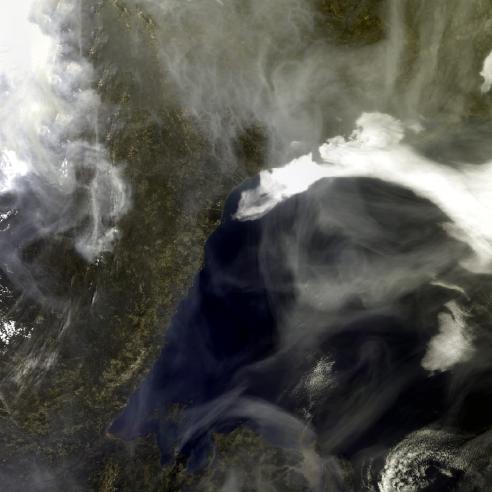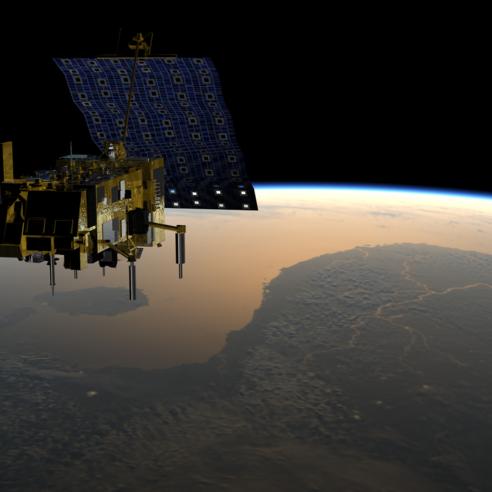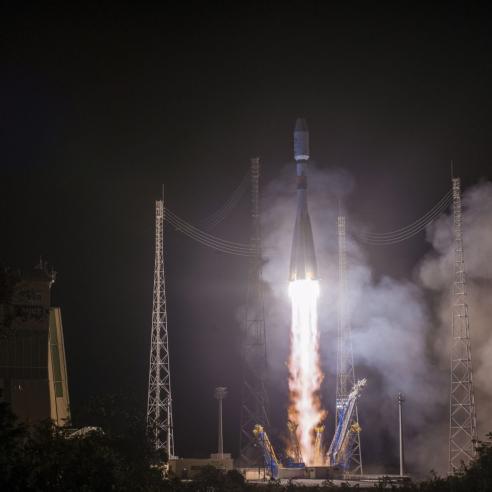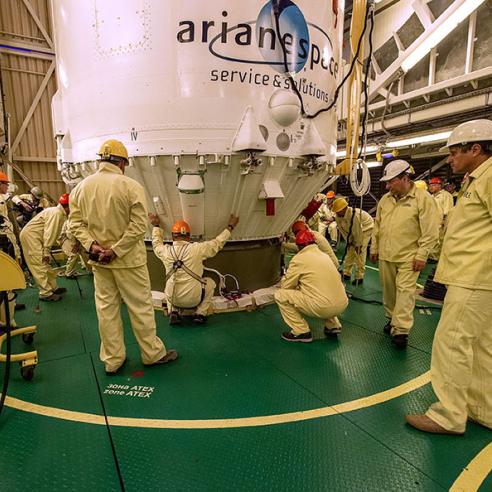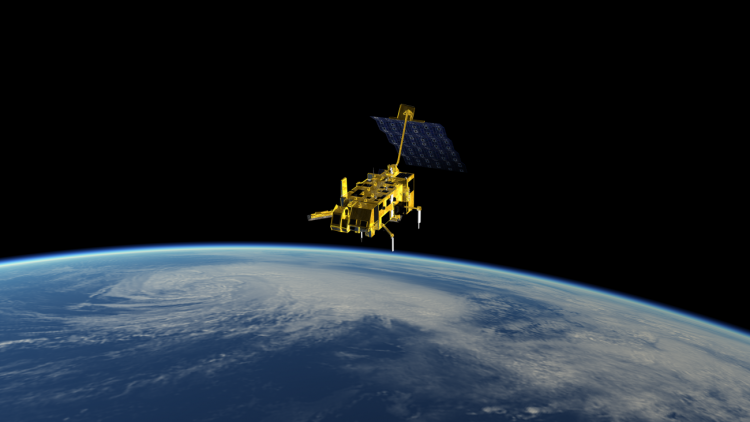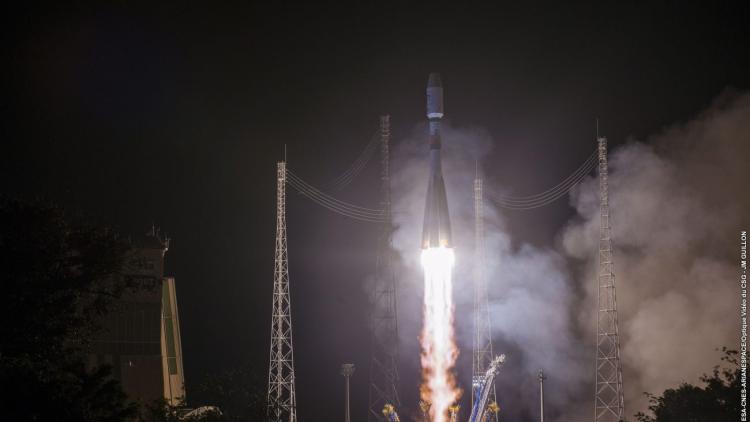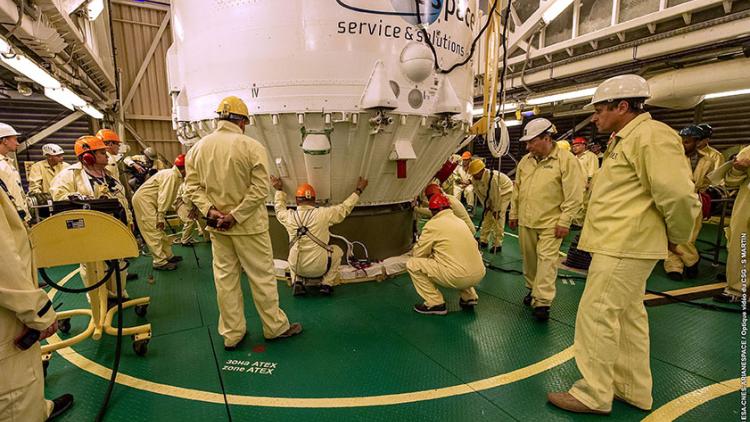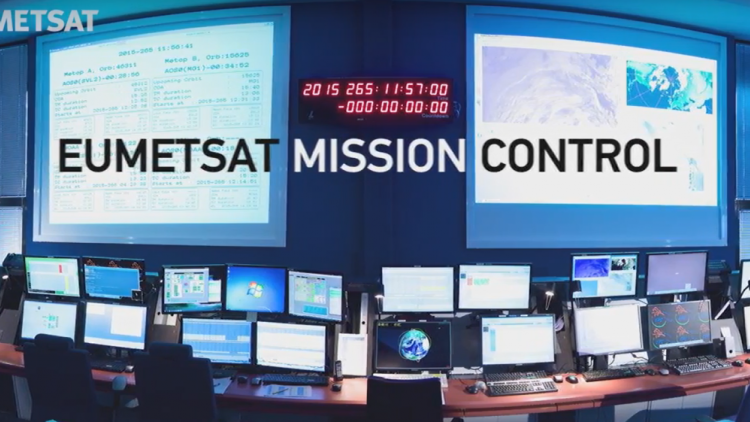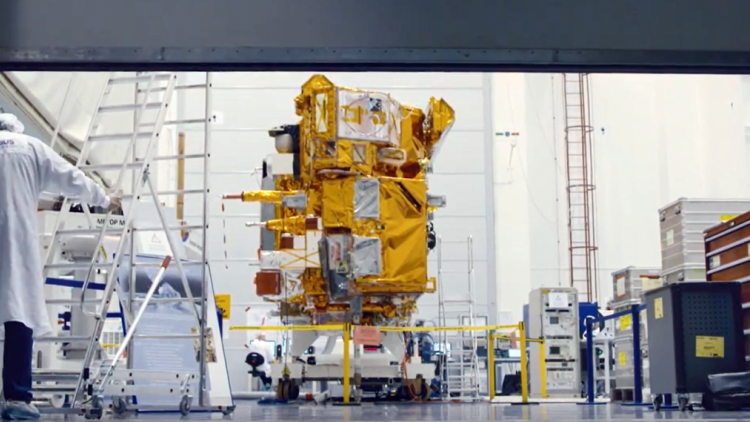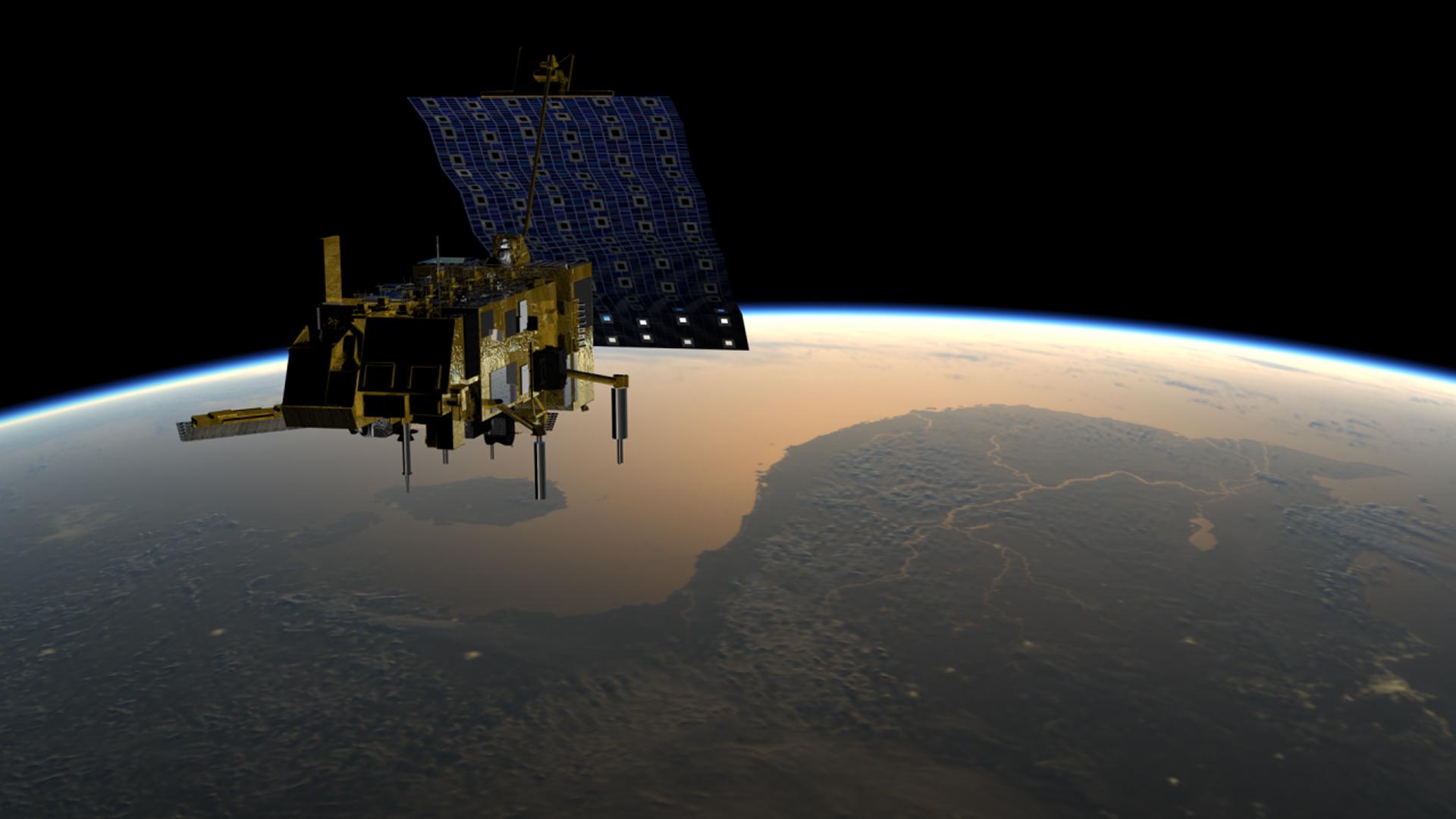
First interferogram from Metop-C’s IASI instrument
On 14:19 on 10 December 2018, the Infrared Atmospheric Sounding Interferometer on board Metop-C performed its first measurement.

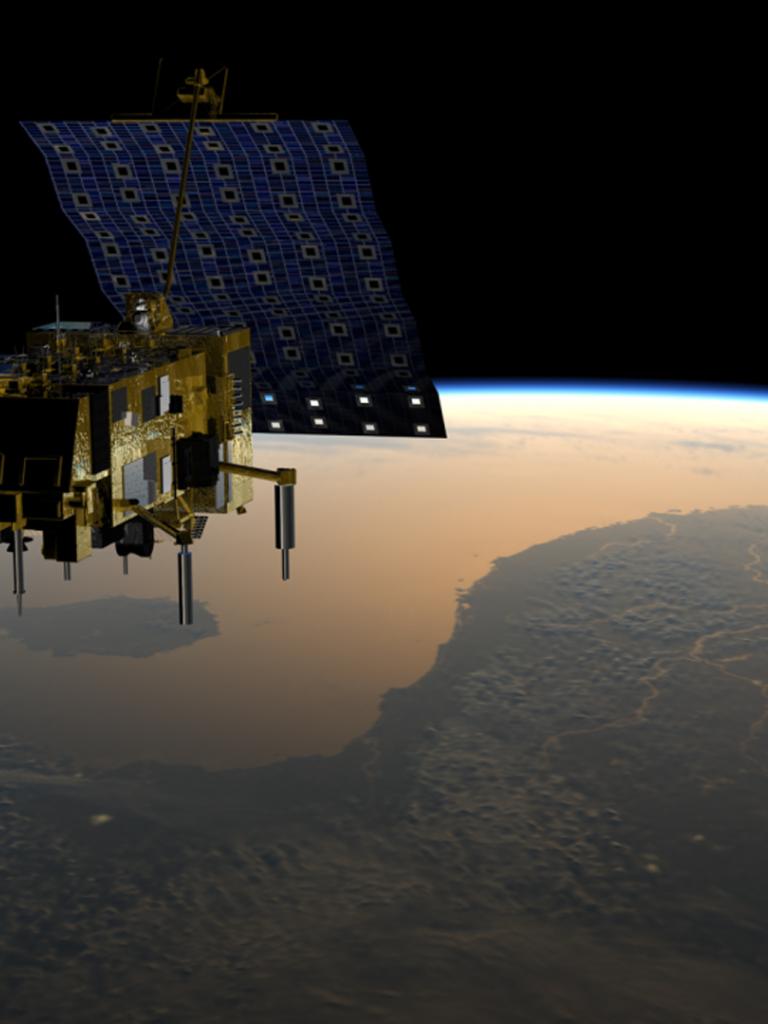
IASI is a Fourier spectrometer and measures radiances from the infrared spectrum from 3.62 µm to 15.5 µm by creating a so-called interferogram, which in further processing steps is converted into a calibrated spectrum.
01 November 2023
11 December 2018
In Figure 1 (below) the first interferogram of Metop-C’s IASI is shown. A measurement was taken from an infrared source on board, which serves as a target at a known reference temperature for the calibration of the instrument.
It was taken while Metop-C was flying over the North Pole near Svalbard.
After this, IASI also started to measure interferograms of Earth’s atmosphere. In the coming days, as part of the ongoing commissioning activities, IASI’s on-board processing subsystem will also be activated, which will perform the transformation of the interferograms to spectra.

With IASI being fully activated, all of Metop-C’s instruments are delivering data and are about to enter their calibration and validation phases.
The three IASI instruments on the three operational Metop satellites were built by Thales Alenia Space as prime contractor under the responsibility of CNES as partner agency of EUMETSAT.
Its data are essential inputs for weather forecasting and provide information on vertical temperature and moisture profiles of the atmosphere.
IASI can also measure trace and greenhouse gases, including carbon monoxide (CO), sulphur dioxide (SO2) and ozone, to mention a few. Having three IASI instruments in orbit provides more valuable data for forecasting than ever before and assures the continuity necessary for collecting long time series of data for climate monitoring.

